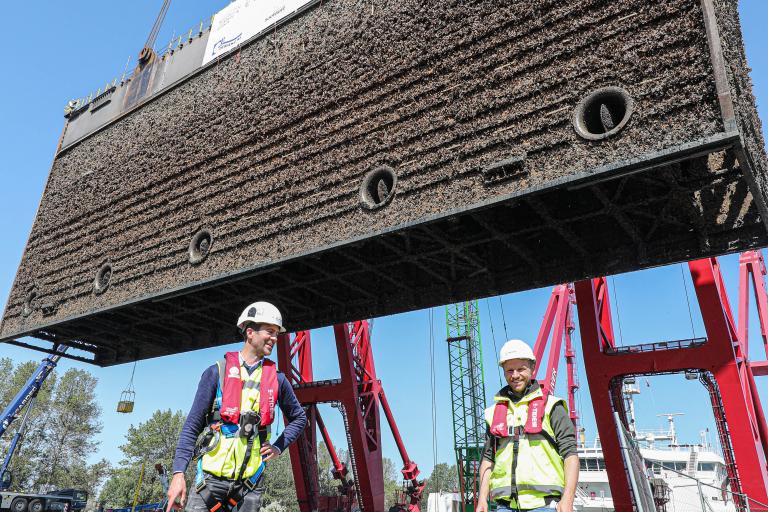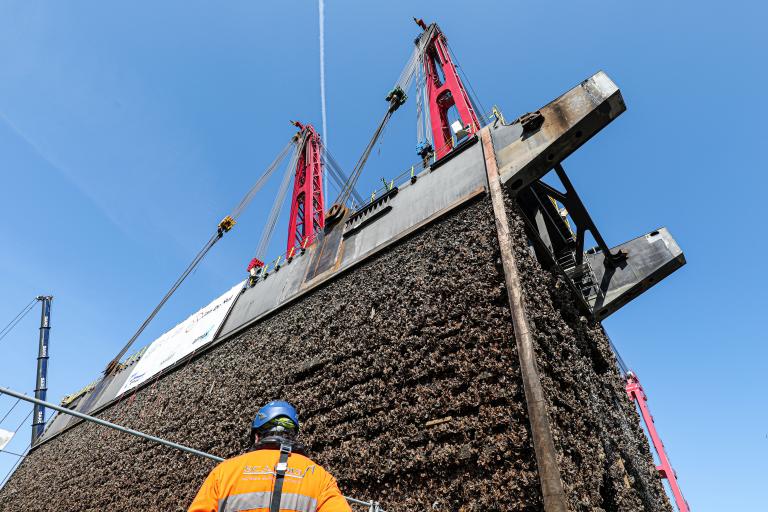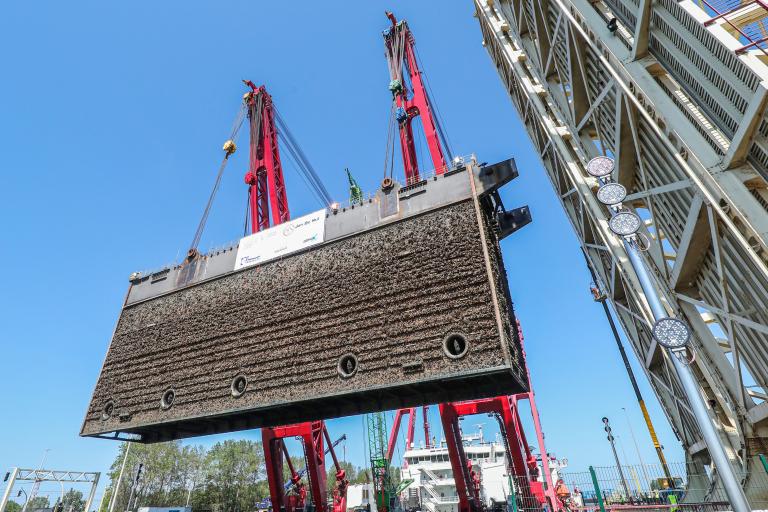
Renovation of the Pierre Vandamme Lock in Zeebrugge, Belgium
LOCK GATE SPECTACULARLY LIFTED
With a weight of over 2,500 tonnes and a surface area of a quarter of a football field, the lock gate of the Pierre Vandamme lock in Zeebrugge is no lightweight. And yet, Jan De Nul Group managed to uncouple the gate, lift it out of the water and use a floating sheerleg to transfer it to the inner port for fundamental renovation. A spectacular operation that lasted no less than 19 hours. During the renovation works, the lock was perfectly capable of full operation.
The Pierre Vandamme lock dates back to 1984 and consists of two gate chambers, each with two rolling gates and two movable bridges. In 2018, Jan de Nul Group lifted the most seaward gate out of the gate chamber, and placed it back after renovation in 2019. In 2020, the same thing happened to the most landward gate. For this purpose, Jan De Nul Group mobilised the floating sheerleg Gulliver, which can lift up to 4,000 tonnes.
The consortium of Jan De Nul nv, Algemene Ondernemingen Soetaert nv, Almex Metaal and Demako nv renovated the lock gate in the inner port of Zeebrugge. Once ashore, scaffolds were placed around the gate to remove oysters and silt. The consortium replaced several mechanical components and installed new technologies such as a compressor and agitators. In addition, several adjustments were made to the steel structure, such as the installation of four additional butterfly valves. After the renovation works, the gate was repainted to protect it from corrosion.
In 2021, the renovated lock gate was sailed back to the lock to be installed in the gate chamber. During this renovation works, the Vandamme Lock kept functioning perfectly with the other three lock gates.
Intense preparation
Together with Jan De Nul's study and design department, the project team already started several months earlier with the thorough elaboration of the working methods and execution plans. On the four lifting eyes to be installed on the gate, they replaced the existing skin plate by a thicker plate with lifting eye. The last two weeks before the hoisting date, the cantilever arm was shortened and preparations were made to uncouple the top roller carriage and the gate.
"We prepared this lifting and sailing operation for four months, including eight weeks on site. Despite the impact of COVID-19, we were able to meet the proposed lifting date. We carried out the preparatory works quickly, efficiently and with high quality." - Kenneth De Visch, Project Manager
Accurate execution
Lifting the lock gate required the utmost concentration. Both on the lifting day and during the preparatory works, the site management had to thoroughly prepare and follow up on the alignment and coordination of the various activities. During the sailing operation, the passage of the open bridges was of crucial concern. Despite the shortening of the cantilever arm, a limited free space of only 2.5 metres was still calculated against the open bridges. But also during the preparation phase, important factors had to be taken into account. For example, the lifting weight had a major impact on the design of the lifting eyes and the execution method. The actual weight of accretion such as oysters and mussels, and silt on the gate was an unknown factor. In the end, there was no less than 750 tonnes of accretion and silt on the gate, which determined the weight to be hoisted at 2,715 tonnes.


